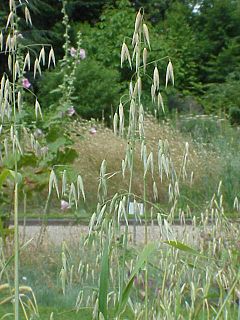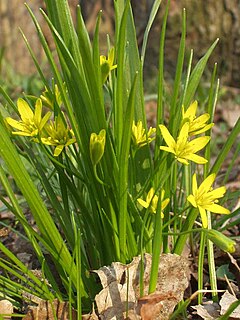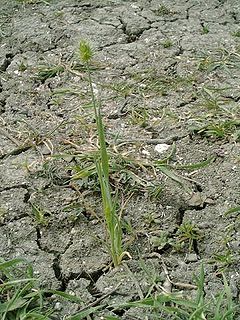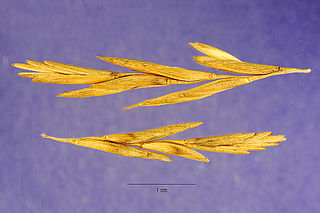
Hashish, also known as hash, is a drug made by compressing and processing parts of the cannabis plant, typically focusing on flowering buds containing the most trichomes. It is consumed by smoking, typically in a pipe, bong, vaporizer or joint, or via oral ingestion. Hash has a long history of usage in countries such as Morocco, Pakistan, Afghanistan, India, Iran, Israel, and Lebanon. Hash consumption is also popular in Europe. In the United States, dried flowers or concentrates are more popular, though hash has seen a rise in popularity following changes in law. Like many recreational drugs, multiple synonyms and alternative names for hash exist, and vary greatly depending on the country and native language.

Fagaceae is a family of flowering plants that includes beeches, chestnuts and oaks, and comprises eight genera with about 927 species. Fagaceae in temperate regions are mostly deciduous, whereas in the tropics, many species occur as evergreen trees and shrubs. They are characterized by alternate simple leaves with pinnate venation, unisexual flowers in the form of catkins, and fruit in the form of cup-like (cupule) nuts. Their leaves are often lobed and both petioles and stipules are generally present. Their fruits lack endosperm and lie in a scaly or spiny husk that may or may not enclose the entire nut, which may consist of one to seven seeds. In the oaks, genus Quercus, the fruit is a non-valved nut called an acorn. The husk of the acorn in most oaks only forms a cup in which the nut sits. Other members of the family have fully enclosed nuts. Fagaceae is one of the most ecologically important woody plant families in the Northern Hemisphere, as oaks form the backbone of temperate forest in North America, Europe, and Asia and one of the most significant sources of wildlife fodder.

Marrubium is a genus of flowering plants in the family Lamiaceae, native to temperate regions of Europe, North Africa, and Asia as far east as the Xinjiang region of western China. A few species are also naturalized in North and South America.

Avena is a genus of Eurasian and African plants in the grass family. Collectively known as the oats, they include some species which have been cultivated for thousands of years as a food source for humans and livestock. They are widespread throughout Europe, Asia and northwest Africa. Several species have become naturalized in many parts of the world, and are regarded as invasive weeds where they compete with crop production. All oats have edible seeds, though they are small and hard to harvest in most species.

Sambucus is a genus of flowering plants in the family Adoxaceae. The various species are commonly called elder or elderberry. The genus was formerly placed in the honeysuckle family, Caprifoliaceae, but was reclassified as Adoxaceae due to genetic and morphological comparisons to plants in the genus Adoxa.

Live oak or evergreen oak is any of a number of oaks in several different sections of the genus Quercus that share the characteristic of evergreen foliage. These oaks are not more closely related to each other than they are to other oaks.

The stone pine, botanical name Pinus pinea, also known as the Italian stone pine, umbrella pine and parasol pine, is a tree from the pine family (Pinaceae). The tree is native to the Mediterranean region, occurring in Southern Europe, The Palestinian Territories, Israel, Lebanon and Syria. It is also naturalized in North Africa, the Canary Islands, South Africa and New South Wales. The species was introduced into North Africa millennia ago, such a long time that it is essentially indistinguishable from being native.

A blue beauty
The founder crops are the eight plant species that were domesticated by early Neolithic farming communities in southwest Asia, which formed the basis of systematic agriculture in the Middle East, North Africa, India, Persia and Europe. They consist of flax, three cereals and four pulses, and are the first known domesticated plants in the world. Although domesticated rye occurs in the final Epi-Palaeolithic strata at Tell Abu Hureyra, it was insignificant in the Neolithic Period of southwest Asia and only became common with the spread of farming into northern Europe several millennia later.

Gagea is a large genus of spring flowers in the lily family. It is found primarily in Eurasia with a few species extending into North Africa and one species in North America.

Xeranthemum is a group of plants in the sunflower family, native to Southern Europe.

In biogeography, the Mediterranean Basin is the region of lands around the Mediterranean Sea that have mostly a Mediterranean climate, with mild to cool, rainy winters and warm to hot, dry summers, which supports characteristic Mediterranean forests, woodlands, and scrub vegetation.

Cephalanthera, abbreviated Ceph in horticultural trade, is a genus of mostly terrestrial orchids. Members of this genus have rhizomes rather than tubers. About 15 species are currently recognized, most of them native to Europe and Asia. The only species found in the wild in North America is Cephalanthera austiniae, the phantom orchid or snow orchid. Ecologically, this species is partially myco-heterotrophic. Some of the Eurasian species hybridise.

Phleum (timothy) is a genus of annual and perennial plants in the grass family. The genus is native to Europe, Asia and north Africa, with one species also in North and South America.

Rhaponticum, is a genus of flowering plants in the thistle tribe within the sunflower family.

Vulpia is a widespread genus of plants in the grass family, native to many countries around the world and naturalized in many of the nations to which it is not native. It is most common in temperate regions.

Echinaria is a genus of Eurasian and North African plants in the grass family. The only known species is Echinaria capitata, native to the Mediterranean Region as well as the Southwest and Central Asia.

Hordelymus is a genus of European, north African, and southwest Asian plants in the grass family.

Cladium mariscus is a species of flowering plant in the sedge family known by the common names swamp sawgrass, great fen-sedge, saw-sedge or sawtooth sedge. Previously it was known as elk sedge. It is native of temperate Europe and Asia where it grows in base-rich boggy areas and lakesides. It can be up to 2.5 metres tall, and has leaves with hard serrated edges. In the past, it was an important material to build thatched roofs; harvesting it was an arduous task due to its sharp edges that can cause deep lacerations.

Thinopyrum is a genus of Eurasian and African plants in the grass family.



















